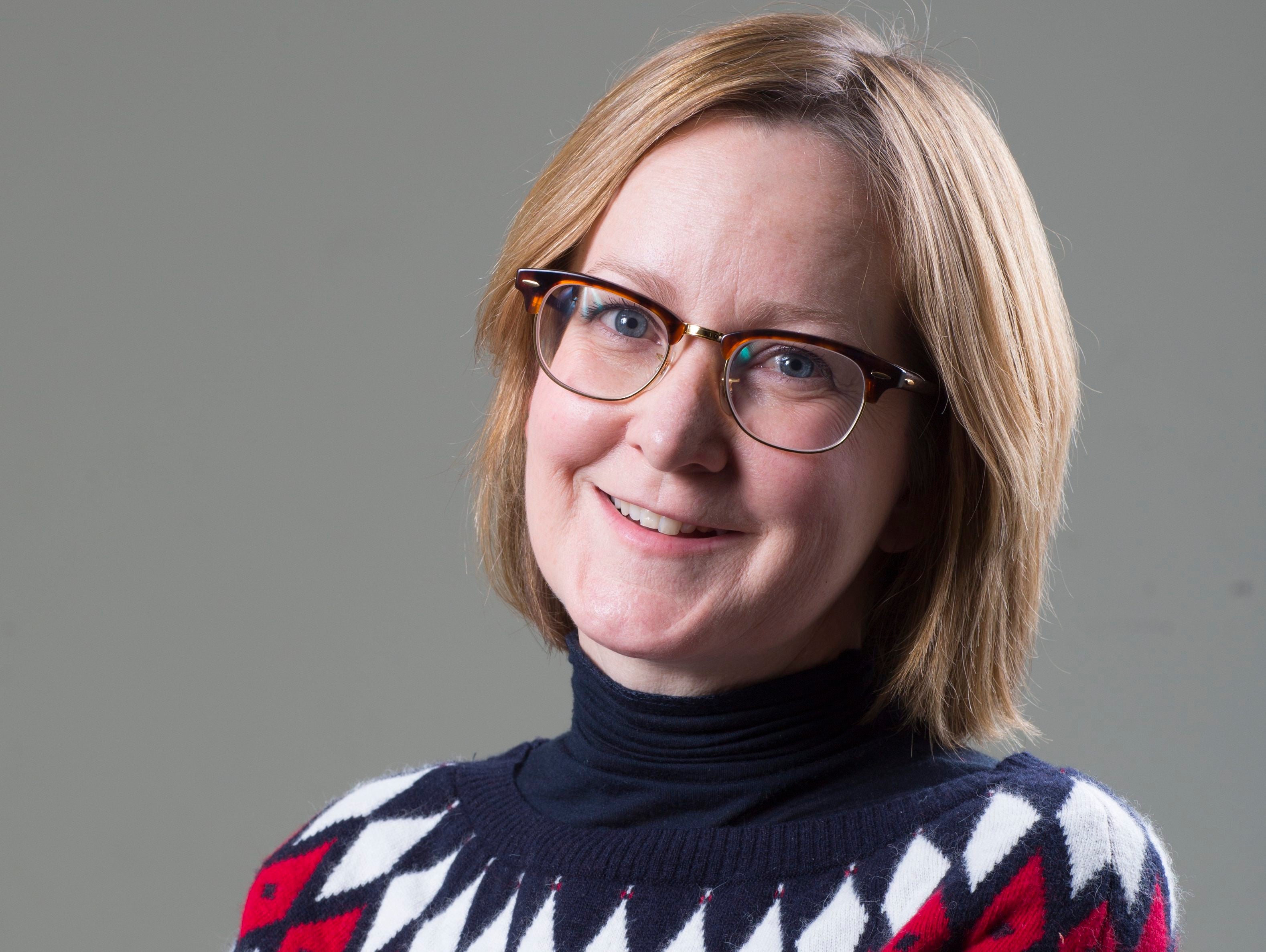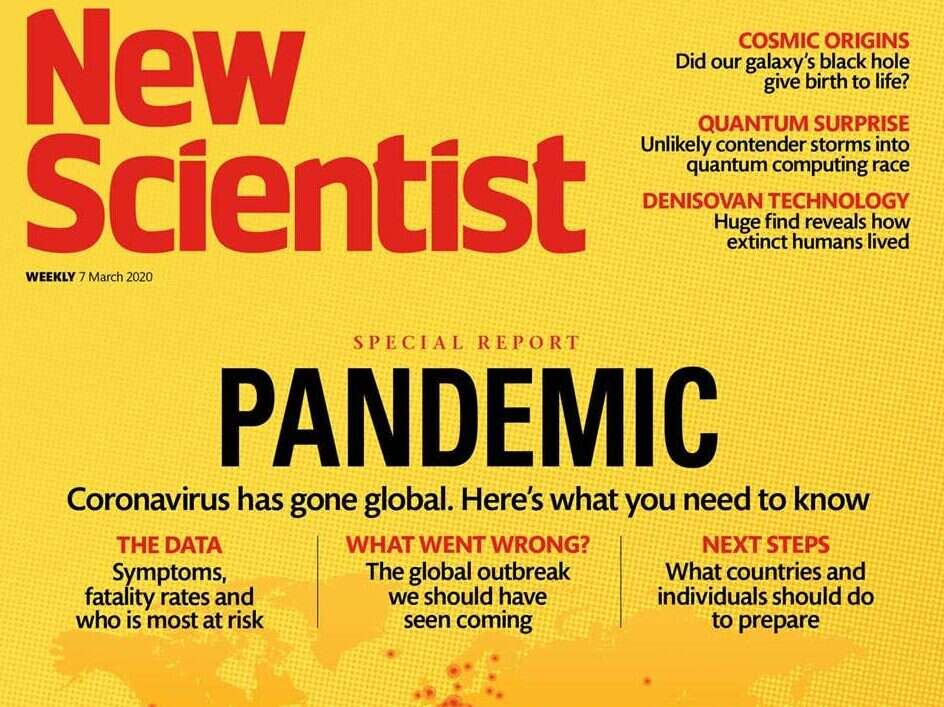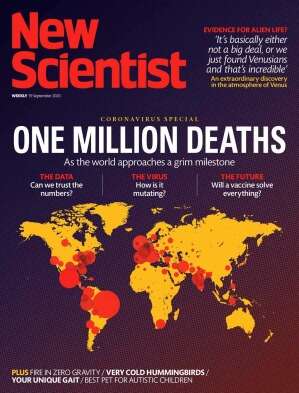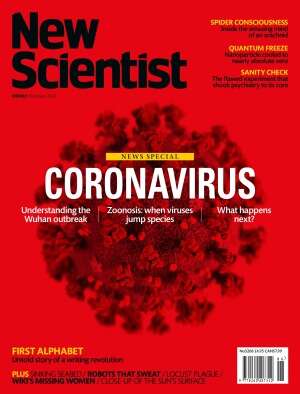
New Scientist editor Emily Wilson has been busy.
The popular science magazine has been forced, like so many publishers, to adapt and reform its business to the ‘new normal’ of life with Covid-19, which has put paid to in-person events and shut down offices.
The New Scientist team – including 40 staff journalists, nearly all of whom are based in the UK – has been working from home since 12 March, in line with government advice as part of lockdown restrictions.
Wilson says she was nervous about remote working at first, but describes this early anxiety as “cute naïve” in retrospect. “What was the problem? We’re all on the internet anyway,” she tells Press Gazette.
“Very early on we all said: ‘Well, the one thing you can’t do when you’re all [working] from home is innovate,’ and actually that was nonsense too. We’re starting loads of new businesses and products. We’ve completely changed our business, all from our bedrooms.”
This year alone the title has launched newsletters, a podcast, a Youtube series, and explored new commercial opportunities online.
Not that the change in working practice has been without its difficulties.
“We’ve been through the same journey as everyone: tech problems, working out how to sit comfortably, [ensuring] that you can actually work remotely,” she says.
“We’ve had to recreate all that interstitial creativity, all the meetings that we used to have when we would stand at what we call ‘The Wall’ looking at printed-out pages of the mag and sucking our teeth and arguing – we’ve had to recreate that on Microsoft Teams.”
Wilson, who joined New Scientist as editor in 2018, admits it’s been a “gruelling year” and there is still a lot more work to be done.
‘…we need to live in the now’
New Scientist Live, the magazine brand’s flagship annual event, welcomed 40,000 people to the London Excel Centre over four days last October. This year the Excel was turned into a Nightingale Hospital for coronavirus patients and remains on standby in case of a second wave.
For Wilson and her team it meant quickly creating a virtual events business where one didn’t exist before, which has led to the first subscriber-only online events run by the title and plans for more to follow.
“I didn’t know whether people would actually pay to go to online events, but they do,” says Wilson. “So the events team now does that.” The title has put on a mixture of free and paid on-demand events so far.
New Scientist Live has been officially postponed until October next year, but Wilson says digital events are likely here to stay.
“You can throw a virtual event together so quickly. We can go: ‘Yeah, let’s do an event for subscribers,’ we email them, book a slot with whoever we’re using [to run events], and then we can just all do it from our bedrooms with a hazy backdrop to hide our dirty underwear. The audience can just join us while they’re having a cocktail or cooking their dinner.
“So that’s tremendous and why would you give up being able to do that kind of thing? I’m sure at some point we’ll go back to having live events too because people love live events, but the reality is that we are years away from normality, we’re not a year away, so we need to live in the now.”
When it comes to new Covid working practices, Wilson doesn’t believe they will ever return to what they were pre-pandemic.
“We’ve proved that people can remote work brilliantly and still get the product out,” she says. But adds that it won’t stay “exactly like this “forever”, not least because the experience has been miserable for some.
She believes it will be 2024 before there is a return to “some kind of normality” even if a vaccine is found, because “it’s not going to magically fix anything and it’s certainly not going to magically fix anything quickly.”
She adds: “Everything is so precarious you cannot plan ahead. So I would predict that we will continue to be virtual for a while and certainly to keep that very strongly in our armoury.”
Ecommerce, podcasts and newsletters
Alongside its new online events business, the title has put its hand to ecommerce, opening an online shop selling books, bags, mugs and its new Essential Guides – hardback mags on key topics such as AI and health.
It also runs job ads for science professionals and even has a travel business selling science-themed tours – “currently more of a beautiful dream to look forward to,” says Wilson.
If it has something of the Guardian about it, that may be because Wilson previously served as assistant editor at the paper, and before that as editor-in-chief of the Guardian’s news operation in Australia.
Since August, New Scientist has been publishing weekly videos on Youtube explaining some of the biggest topics in science, hosted by social media editor Sam Wong. It also created a special edition app on the coronavirus – another first – which Wilson says “sold well and hit all its targets”.
Before the pandemic it launched a podcast, New Scientist Weekly, some 15 years after its first foray into the medium, which was killed off by previous owners. The title is currently owned by a small group of investors who bought it from Reed Business Information in 2017. (The same investors also bought the Times Educational supplement from News UK).
New Scientist has also started publishing its own free email newsletters this year, again before the pandemic hit British shores, and is “doubling down” on them now, with the approach being “very personal emails into your inbox from our writers”.
There are five so far, including a daily and weekly, with more planned. “It’s a wonderful way of asking our audience to segment itself for us… and it’s also a very personal way of engaging,” says Wilson.
The newsletters are “laying on thousands of new sign-ups”, she adds.
Yet another new string to the brand’s bow as it grows its digital revenue streams in the pandemic era will be online learning courses. Although still in development, Wilson describes it as a “boom business”.
She says the magazine is “quite perfectly positioned” to provide the service “given that we’re the number one science mag in the world, full of people who know lots about the brain and physics and stuff”.
For most of the new digital efforts, all roads lead to subscriptions.
“We are trying to grow our subscriptions through everything we do really, that’s our focus,” says Wilson. “So if we’re doing a podcast, we do count up how many subscribers will come from that podcast and the podcast team will say: ‘Hey, why don’t you subscribe?’
The bulk of New Scientist’s revenue comes from reader subscriptions. It sold more than 118,000 copies worldwide last year (ABC figures), of which 95,000 were from subscriptions.
“We are lucky in that the big chunk of our revenue has always been subscriptions. That is a really privileged place to be right now,” says Wilson.
“We’ve been growing our subscriptions for about four years now,” she adds, and figures are again up on last year. “But I think it’s not bullshit on any level to say we are going to end the year, fingers crossed, stronger than at the start of it,” she says, “although it’s been a hard year.”
Subscriber numbers did see a boost during lockdown, which Wilson says was expected. “If you’re ever going to subscribe to a science mag then this is going to be the year to do it,” she explains.
“The two biggest stories in the world right now are climate change and Covid-19, and they’re both in our wheelhouse. So there genuinely has never been a better time to sign up for science mag.”
New Scientist’s three biggest areas for subscriptions – its “deep markets” – are UK, US and Australia. There are two reporters in the US, one in Australia and the rest are based in Britain.
But despite its strong subscriber base, New Scientist has been no stranger to the commercial difficulties of the pandemic. It has had to restructure its business, particularly in the areas hardest hit by the crisis. Journalists have also been affected.
“It has been a hard year, so people have gone,” says Wilson. But she says there have been new hires in the newly developing parts of the business.
Newsstand sales have also held up better than expected. “We kept on being fully stocked everywhere. We predicted a massive fall off and we’ve had some fall off, although there are signs of recovery now, fingers crossed.”
Subscribers come through various channels and generally “like the content before they really think about the brand”, says Wilson.
The print mag remains a high priority, and is the focus for features, with a digital-first approach for news.
Digital subscriptions and bundle subscriptions are an increasingly large part of the business, but readers continue to enjoy and cherish the print edition.
Wilson says print is “a labour of love, but a massive hassle”, although she believes print still has a long-term future – “the readers like to have a mag” – and the title underwent a “gentle redesign” last year.
As for online traffic, it’s a case of “rising tide has lifted all ships” in news media. “It’s been a big traffic year,” says Wilson, who has grown the digital team since joining the title. “Our traffic’s been growing steadily. Obviously this has been a stellar year, but I mean you would expect that wouldn’t you – there’s quite a lot going on.”
Covering the pandemic
Covering the pandemic presented a new challenge for New Scientist, which is not usually competing to cover the biggest story of the day.
“There’s only so much competition for a story about neutrinos, however thrilling that might be”, says Wilson, but this all changed with Covid-19.
Wilson says that while The Guardian was “running four live blogs”, New Scientist decided its journalists were going to work on stories “that were going to survive a bit” – more in-depth and more analytical.
Wilson says she decided the team would “only go for things where we can really add some value for our readers… that isn’t just going to be still valuable in a week, but actually will probably still be valuable in a month’s time.”
Early on that meant stories about the “myth of herd immunity”, for example. Alongside this change to the pace of reporting came the decision to devote “quite a lot of our reporting firepower to the pandemic”, with New Scientist’s top writers pivoting to cover it.
And where normally the title would never do the same cover story twice in a decade even, since the lockdown it has done more than 13 Covid-19 covers.
‘All firsts are good’
Wilson’s editorship has changed New Scientist in one other important way. She may be its 11th editor, but she is the first woman to hold the role since the title began publishing in 1956.
“I think that all firsts are good,” she says. “They just are aren’t they.”
“Diversity is a really big thing for us at New Scientist. We’ve worked really hard on gender stuff, and we’re now working really hard on racial diversity,” says Wilson.
A diversity intern programme which began last year is being repeated again this year, “because if we can churn out fantastic young science journalists from BAME backgrounds into the market, that’s quite a big deal”, she adds.
“It’s important to see people in roles. It’s important for young girls and women to see people in different kinds of roles and it’s true in everything… It’s really hard if you can’t see anyone to model yourself on.”
Email pged@pressgazette.co.uk to point out mistakes, provide story tips or send in a letter for publication on our "Letters Page" blog



